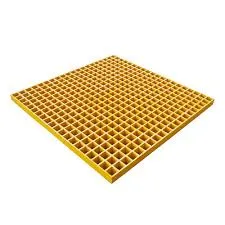
-
 Afrikaans
Afrikaans -
 Albanian
Albanian -
 Amharic
Amharic -
 Arabic
Arabic -
 Armenian
Armenian -
 Azerbaijani
Azerbaijani -
 Basque
Basque -
 Belarusian
Belarusian -
 Bengali
Bengali -
 Bosnian
Bosnian -
 Bulgarian
Bulgarian -
 Catalan
Catalan -
 Cebuano
Cebuano -
 China
China -
 China (Taiwan)
China (Taiwan) -
 Corsican
Corsican -
 Croatian
Croatian -
 Czech
Czech -
 Danish
Danish -
 Dutch
Dutch -
 English
English -
 Esperanto
Esperanto -
 Estonian
Estonian -
 Finnish
Finnish -
 French
French -
 Frisian
Frisian -
 Galician
Galician -
 Georgian
Georgian -
 German
German -
 Greek
Greek -
 Gujarati
Gujarati -
 Haitian Creole
Haitian Creole -
 hausa
hausa -
 hawaiian
hawaiian -
 Hebrew
Hebrew -
 Hindi
Hindi -
 Miao
Miao -
 Hungarian
Hungarian -
 Icelandic
Icelandic -
 igbo
igbo -
 Indonesian
Indonesian -
 irish
irish -
 Italian
Italian -
 Japanese
Japanese -
 Javanese
Javanese -
 Kannada
Kannada -
 kazakh
kazakh -
 Khmer
Khmer -
 Rwandese
Rwandese -
 Korean
Korean -
 Kurdish
Kurdish -
 Kyrgyz
Kyrgyz -
 Lao
Lao -
 Latin
Latin -
 Latvian
Latvian -
 Lithuanian
Lithuanian -
 Luxembourgish
Luxembourgish -
 Macedonian
Macedonian -
 Malgashi
Malgashi -
 Malay
Malay -
 Malayalam
Malayalam -
 Maltese
Maltese -
 Maori
Maori -
 Marathi
Marathi -
 Mongolian
Mongolian -
 Myanmar
Myanmar -
 Nepali
Nepali -
 Norwegian
Norwegian -
 Norwegian
Norwegian -
 Occitan
Occitan -
 Pashto
Pashto -
 Persian
Persian -
 Polish
Polish -
 Portuguese
Portuguese -
 Punjabi
Punjabi -
 Romanian
Romanian -
 Russian
Russian -
 Samoan
Samoan -
 Scottish Gaelic
Scottish Gaelic -
 Serbian
Serbian -
 Sesotho
Sesotho -
 Shona
Shona -
 Sindhi
Sindhi -
 Sinhala
Sinhala -
 Slovak
Slovak -
 Slovenian
Slovenian -
 Somali
Somali -
 Spanish
Spanish -
 Sundanese
Sundanese -
 Swahili
Swahili -
 Swedish
Swedish -
 Tagalog
Tagalog -
 Tajik
Tajik -
 Tamil
Tamil -
 Tatar
Tatar -
 Telugu
Telugu -
 Thai
Thai -
 Turkish
Turkish -
 Turkmen
Turkmen -
 Ukrainian
Ukrainian -
 Urdu
Urdu -
 Uighur
Uighur -
 Uzbek
Uzbek -
 Vietnamese
Vietnamese -
 Welsh
Welsh -
 Bantu
Bantu -
 Yiddish
Yiddish -
 Yoruba
Yoruba -
 Zulu
Zulu
frp piping system
Understanding FRP Piping Systems A Modern Solution for Industrial Needs
Fiber Reinforced Plastic (FRP) piping systems have emerged as a revolutionary solution in various industrial applications due to their remarkable properties and performance advantages. Composed of a polymer matrix reinforced with fibers, typically glass or carbon, FRP pipes offer a lightweight, corrosion-resistant alternative to traditional piping materials such as metal or concrete. This article explores the key benefits, applications, and considerations of FRP piping systems.
Advantages of FRP Piping Systems
One of the primary advantages of FRP pipes is their exceptional resistance to chemical corrosion. Industries such as chemical processing, wastewater management, and oil and gas frequently deal with aggressive substances that can quickly degrade conventional piping materials. FRP's inert nature allows it to withstand harsh environments without compromising structural integrity, significantly reducing maintenance costs and extending service life.
Another significant benefit is the lightweight nature of FRP. Compared to steel or concrete, FRP pipes are considerably lighter, which simplifies handling and installation. This can lead to reduced labor costs and quicker project turnaround times. Additionally, the flexibility and ease of installation of FRP piping can facilitate the construction of complex piping layouts, adapting to various site configurations without extensive modifications.
The thermal insulation properties of FRP also contribute to its appeal. FRP pipes tend to have low thermal conductivity, which can help maintain the temperature of the conveyed fluids, particularly in processes where temperature control is critical. This characteristic can also reduce energy consumption in heating and cooling applications.
Applications of FRP Piping Systems
frp piping system

FRP piping systems find applications across a wide range of industries. In the chemical industry, they are commonly used for transporting aggressive chemicals and acids, making them a dependable choice for facilities that require high-performance materials. Wastewater treatment plants benefit from FRP due to their corrosion resistance and ability to handle highly acidic and alkaline substances.
In the oil and gas sector, FRP is increasingly being utilized for offshore applications and pipeline construction due to its lightweight nature and resistance to harsh environmental conditions. The power generation industry also employs FRP pipes, especially in cooling systems, where the ability to withstand varying temperatures and corrosive environments is essential.
Considerations for FRP Piping Systems
While FRP piping systems offer numerous advantages, certain considerations must be addressed before implementation. The initial cost of FRP materials can be higher than traditional piping systems; however, the long-term savings from reduced maintenance and increased longevity often outweigh this initial investment. Additionally, careful selection of resin and reinforcement materials is crucial to ensure the piping meets the specific demands of the application, as different environments may require different formulations.
Another consideration is the thermal expansion and contraction of FRP materials, which can differ from metals. Proper design and installation practices must be implemented to accommodate these changes and prevent potential failures over time.
Conclusion
In conclusion, FRP piping systems represent a modern solution to address the growing needs of various industries for efficient, resilient, and cost-effective piping solutions. By understanding the benefits, applications, and careful considerations related to FRP, industries can make informed decisions that enhance operational efficiency and ensure long-term reliability. As technology advances, the adoption of FRP piping is likely to expand further, making it a staple in industrial infrastructure.









